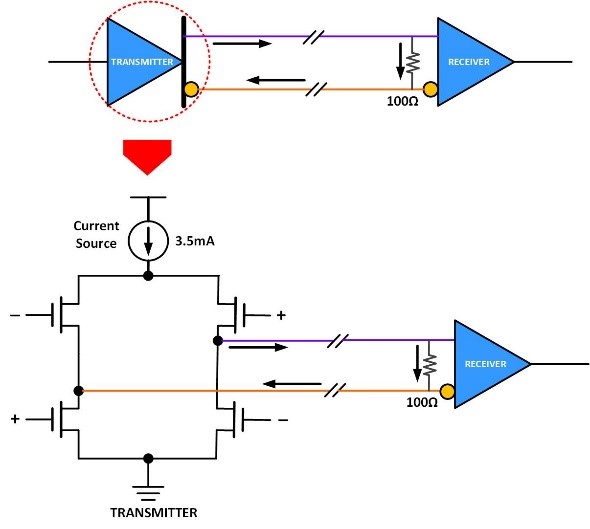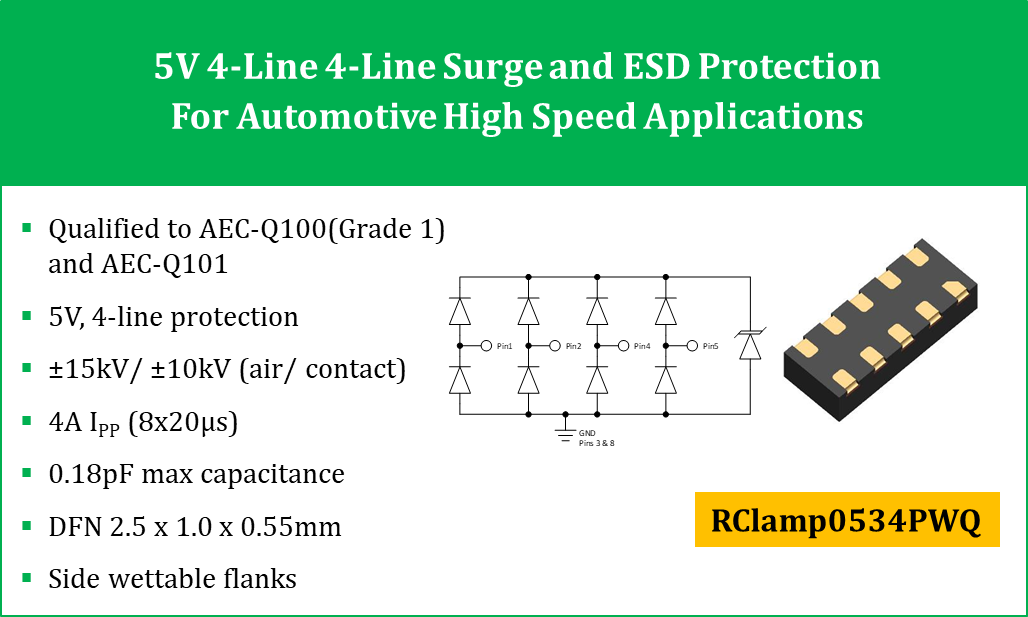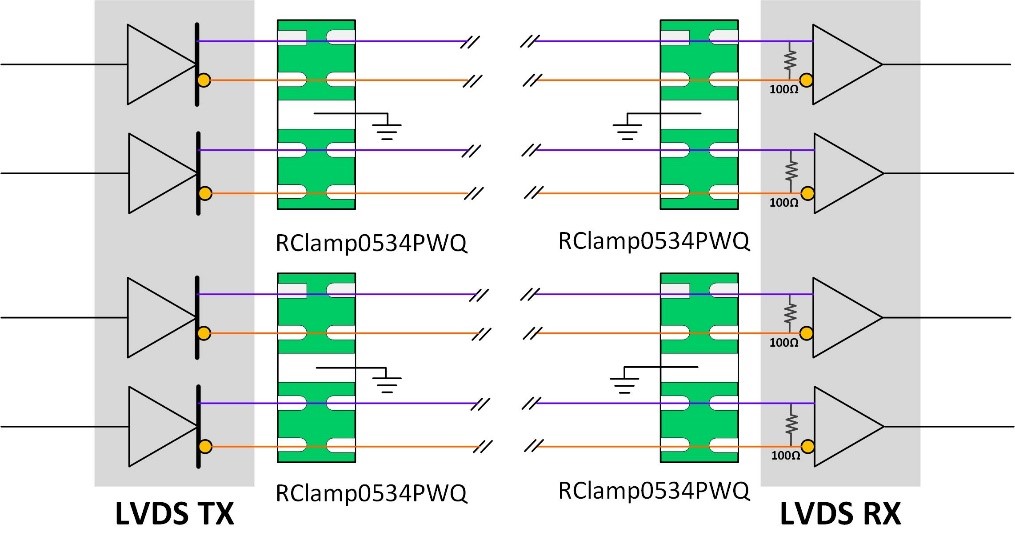The U.S. Department of Transportation (USDOT) and the National Highway Traffic Safety Administration (NHTSA) have published regulations that require all cars, SUVs, trucks, and vans to have rear-view visibility systems that started May 1, 2018. In fact, until recently, the rear-view camera was the only camera used in many car models and was considered an excellent safety feature. Modern vehicles have evolved significantly in the past few years, adopting innovative safety features that include blind-spot detection, surround-view monitoring, forward and rear collision warning, lane keep assistance, and autonomous parking assistance. These features utilize cameras and sensors to inform the driver about the car and its surroundings via the dashboard display. Now, there are at least six cameras present in high-end vehicles. There may be video display systems in cars like DVD players and TVs for passengers.
As you can see, there is an enormous boost in the requirement for faster data and graphics communication. Low Voltage Differential Signaling (LVDS) technology is commonly used for high-speed image transmission in a vehicle (Figure 1). This blog discusses protecting the automotive LVDS nodes from electrostatic discharge (ESD) and electrical overstress (EOS) events. But first, let me briefly talk about the basics of LVDS technology.
Figure 1. Typical automotive LVDS connections
Low Voltage Differential Signaling (LVDS)
Defined by ANSI/TIA/EIA-644 standard, LVDS is a high-speed long-distance digital interface for data communication over twisted pair cables. The LVDS architecture is shown in Figure 2. Data is transmitted between a differential transmitter and a differential receiver. A 100Ω resistor is positioned at the end of the transmission line to terminate the signal. The transmitter consists of a current source that drives a nominal 3.5mA current through the pair of cables. The LVDS transmitter, also referred to as the driver, generates the differential voltage via the termination resistor. LVDS measures the voltage difference between the inverting and noninverting signal levels on the pair of cables. This voltage difference represents a logical state.

Figure 2. Typical LVDS transmitter-receiver pair
Transient Protection of LVDS Devices
When designing a high-speed LVDS interface system for a severe automotive environment, it is prudent to ensure sufficient protection from EOS events. One of the primary causes of EOS is ESD. Moreover, with the shrinking size of the electronic components, it is essential to protect the members from transient threats and meet modern-day vehicles' safety and reliability requirements. ESD protection can be achieved by placing transient voltage suppressor (TVS) diodes on the LVDS differential lines to protect the interface during the fast rise time transient events. If not appropriately safeguarded, transient events can damage both the LVDS transmitter and the receiver. The data/image transmission rate of an LVDS interface is 650Mbps to 1.3Gbps. As the interface tries to transmit content while maintaining high speed, having the ESD protection device with low line-to-line capacitance is critical to ensure signal integrity.

Figure 3. Features of RClamp0534PWQ
Semtech's RClamp®0534PWQ is specifically designed to protect the high-speed differential lines of LVDS interfaces (Figure 3). It protects four high-speed data lines with a maximum junction capacitance of 0.18pF. It has an operating voltage of 5V and is rated for a maximum EOS Peak Pulse Current of 4A (tp=8/20µs). The typical clamping voltage at a peak current of 4A is 4.3V. RClamp0534PWQ provides transient protection as per the specification in IEC 61000-4-2 (ESD) at ±15kV (Air), ±10kV (Contact). It is also compatible with IEC 61000-4-4 (40A EFT, 5/50ns) and IEC 61000-4-5 (Lightning 4A, 8/20µs). RClamp0534PWQ is available in a 10-pin DFN package (2.5 x 1.0 x 0.55mm) with state-of-the-art side wettable flanks for automatic visual inspection (AVI) post assembly. The flow-through package design of the device simplifies the PCB layout and helps maintain signal integrity. RClamp0534PWQ can be used to protect the LVDS transmitter and receiver, as shown in Figure 4.

Figure 4. Protection of LVDS Tx/Rx using RClamp0534PWQ
Semtech also offers a broad range of TVS diodes to protect automotive LVDS applications. Customers can select a TVS diode that fulfills the protection requirement of their application. Table 1 below shows the Semtech parts used for differential line protection.
| Part Name |
VRWM |
Lines |
IEC ESD (Air/Contact) |
Surge (8x20µs) |
CL (Typ) |
Package |
| RClamp01892PWQ |
1.8V |
2 |
±8kV (Contact) |
2.5A |
0.15pF |
DFN 1.0x0.6x0.55mm |
| RClamp3331PQ |
3.3V |
1 |
±30kV/±30kV |
3.5A |
0.35pF |
DFN 1.0x0.6x0.5mm |
| RClamp0592PWQ |
5.0V |
2 |
±30kV/±30kV |
10A |
0.55pF |
DFN 1.0x0.6x0.55mm |
| RClamp0594PWQ |
5.0V |
4 |
±20kV/±17kV |
5A |
0.6pF |
DFN 2.5x1.0x0.55mm |
Table 1: List of differential line protection devices from Semtech
It is common to disregard the selection of a TVS diode when redesigning an automotive system with an updated specification or speed. But with the new circuit specification or speed, the selection criteria of the TVS diode also change. Check Semtech's Automotive High Speed protection portfolio to pick the correct device for the defense of automotive high-speed data transmission in your new design. Semtech is one of the top manufacturers of TVS diodes that protects many of the world's most modern automotive electronic devices. In the severe automotive environment, careful design and proper selection of TVS diodes can't be ignored for safeguarding the communication buses and interfaces.
Please browse Semtech's Automotive Circuit Protection products to learn more about Semtech's offerings for the automotive industry.

Semtech®, the Semtech logo, and RClamp® are registered trademarks or service marks of Semtech Corporation or its affiliates. Other product or service names mentioned herein may be the trademarks of their respective owners.




